Kazakhstan Flag Meaning
A turquoise field with a golden sun and soaring eagle in the center, and a traditional ornamental pattern on the hoist side, representing the eternal blue sky, freedom, and the rich nomadic heritage of the world's largest landlocked country.
- Continent
- Asia
- Adopted
- 1992
- Ratio
- 1:2
- Colors
- turquoise, gold
- Designer
- Shaken Niyazbekov
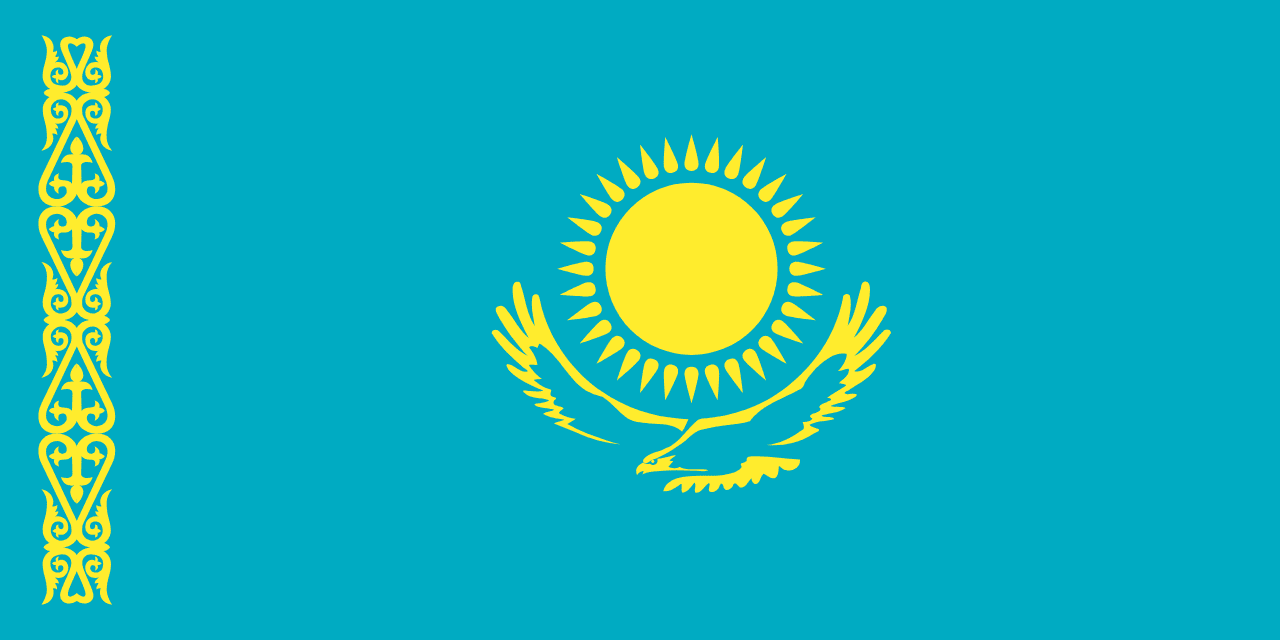
Symbolism
Turquoise Field: Represents the eternal blue sky (Kok Tengri) revered in Kazakh culture and Tengrism, symbolizing peace, tranquility, and the vast open steppes that define Kazakhstan's landscape and nomadic heritage.
Golden Sun with 32 Rays: Symbolizes abundance, prosperity, and the bright future of Kazakhstan. The 32 rays represent the abundance of grain, connecting to Kazakhstan's role as a major wheat producer and agricultural nation.
Golden Eagle (Berkut): Represents freedom, independence, and the soaring spirit of the Kazakh people. The eagle symbolizes the power of the state and the aspiration to reach great heights as a nation.
Traditional Ornament (Koshkar-muiz): The vertical pattern on the hoist side represents 'ram's horns,' a traditional Kazakh ornament symbolizing the nomadic culture, prosperity, and the artistic heritage of the Kazakh people.
Steppe Identity: The overall design reflects Kazakhstan's identity as a nation of the great Eurasian steppes, honoring both the nomadic traditions and the modern aspirations of this transcontinental country.
History
- 15th-18th Century: Kazakh khanates emerged on the steppes, developing the nomadic culture and symbols that would later influence national identity, including reverence for the eternal blue sky and traditional ornaments.
- 1860s-1917: Kazakhstan was gradually incorporated into the Russian Empire, with traditional Kazakh symbols and nomadic culture suppressed or marginalized under colonial rule.
- 1936-1991: As the Kazakh Soviet Socialist Republic, Kazakhstan used Soviet flags with communist symbols while Kazakh cultural identity was largely suppressed, though it persisted in folk traditions.
- December 16, 1991: Kazakhstan declared independence from the Soviet Union under President Nursultan Nazarbayev, beginning the process of developing new national symbols reflecting Kazakh identity.
- June 4, 1992: The current flag designed by Shaken Niyazbekov was officially adopted, marking Kazakhstan's commitment to honoring its nomadic heritage while building a modern nation.
- 1990s-2000s: Kazakhstan developed its oil and gas resources while the flag gained international recognition as the country became a major energy exporter and regional power.
- 2010s-Present: Under the 'Kazakhstan 2050' strategy, the flag represents the country's ambitions to join the world's top 30 developed nations while maintaining its cultural identity.
Trivia
- Kazakhstan is the world's largest landlocked country, covering 2.7 million square kilometers - larger than all of Western Europe combined.
- The flag designer Shaken Niyazbekov was an artist who won a national competition, and his design was chosen from over 600 submissions in 1992.
- Kazakhstan spans 11 time zones and borders both China and Russia, making the flag represent one of the world's most geographically significant countries.
- The country is the world's largest producer of uranium, and the flag appears at international nuclear energy conferences representing this strategic resource.
- Almaty was the capital when the flag was adopted, but it now flies over Nur-Sultan (formerly Astana), the purpose-built capital moved to in 1997.
- The golden eagle (berkut) on the flag is used in traditional Kazakh hunting, with some hunters still practicing this ancient art in the western mountains.
- Kazakhstan's flag appears on the Baikonur Cosmodrome, the world's oldest space launch facility, representing the country's role in space exploration.
- The country is home to the Aral Sea, once the world's fourth-largest lake, making environmental restoration a key challenge represented by the flag's natural symbolism.
- Kazakhstan produces about 40% of the world's uranium and is a major oil exporter, making the flag symbol of significant global energy influence.
- The traditional koshkar-muiz ornament appears on Kazakh carpets, jewelry, and architecture, connecting the flag to living cultural traditions.
- Kazakhstan is the birthplace of apples, and the former capital Almaty means 'father of apples,' though this agricultural heritage is symbolically represented in the flag's sun rays.
- The flag represents a country where the Kazakh language uses both Cyrillic and Latin scripts, reflecting the complex cultural transitions since independence.
- Kazakhstan has significant ethnic diversity, with Kazakhs making up about 68% of the population, making the flag a unifying symbol across different communities.
- The country successfully eliminated its nuclear weapons after independence, and the flag appears at anti-nuclear proliferation events representing this achievement.
- Kazakhstan's economic growth has been among the world's fastest since independence, making the flag a symbol of successful post-Soviet transformation and development.
Related Countries
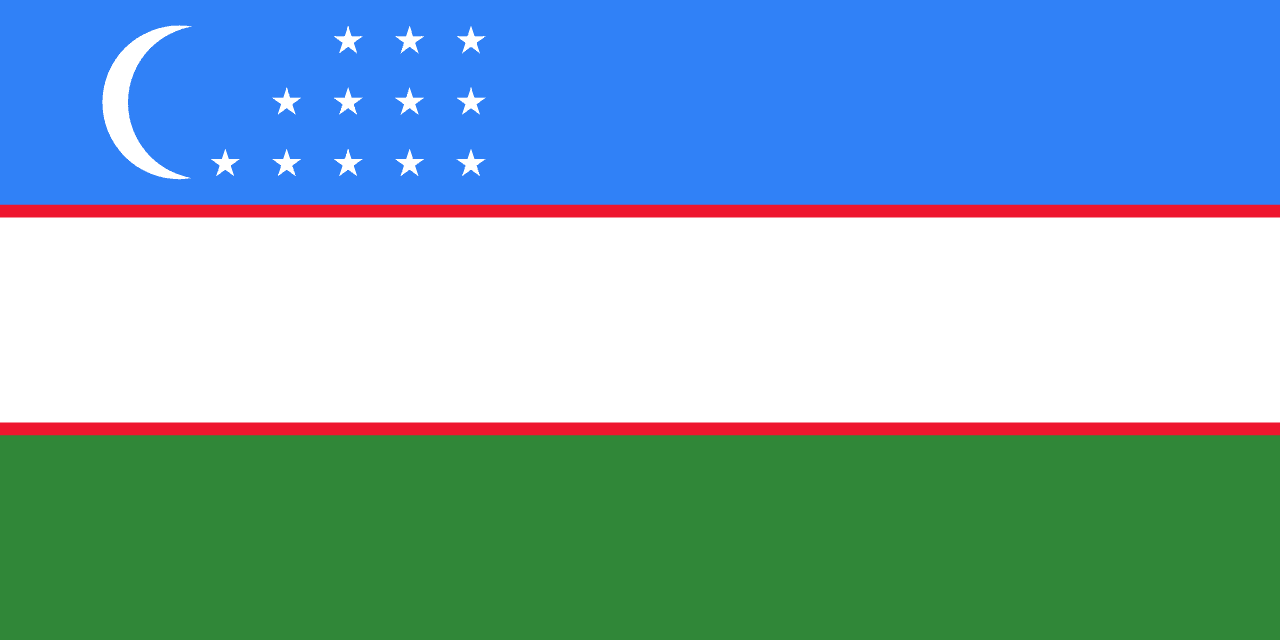
Uzbekistan
Asia
Three horizontal stripes of blue, white, and green separated by thin red stripes, with a white crescent moon and twelve white stars on the blue stripe, representing the sky and water, peace and purity, nature and fertility, the life force, the rebirth of Uzbekistan, and the twelve months of the year.
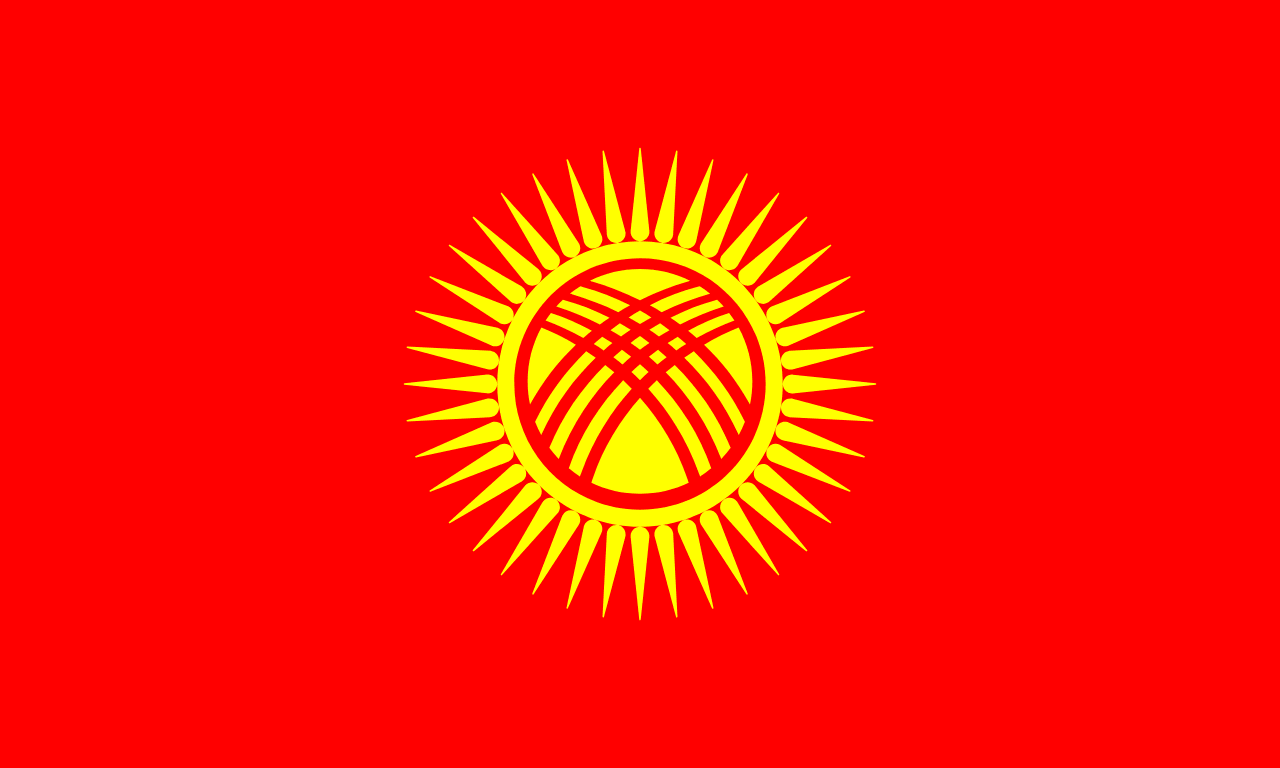
Kyrgyzstan
Asia
A red field with a yellow sun featuring 40 rays and a tunduk (yurt crown) in the center, representing the nomadic heritage, unity of 40 tribes, and the traditional dwelling of the Kyrgyz people in this mountainous Central Asian nation.
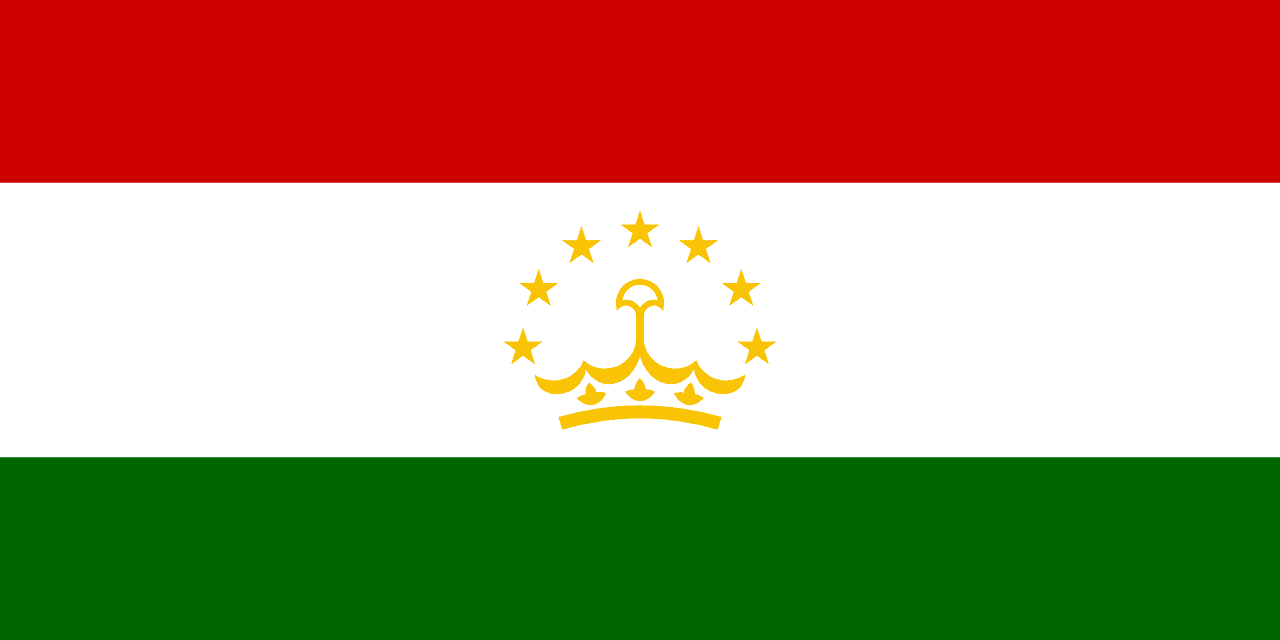
Tajikistan
Asia
Three horizontal stripes of red, white, and green with a golden crown topped by seven stars in the center of the white stripe, representing the unity of workers and peasants, cotton and snow-capped mountains, the verdant valleys, and the Somoni crown symbolizing Tajik sovereignty and the seven regions of historical Tajikistan.
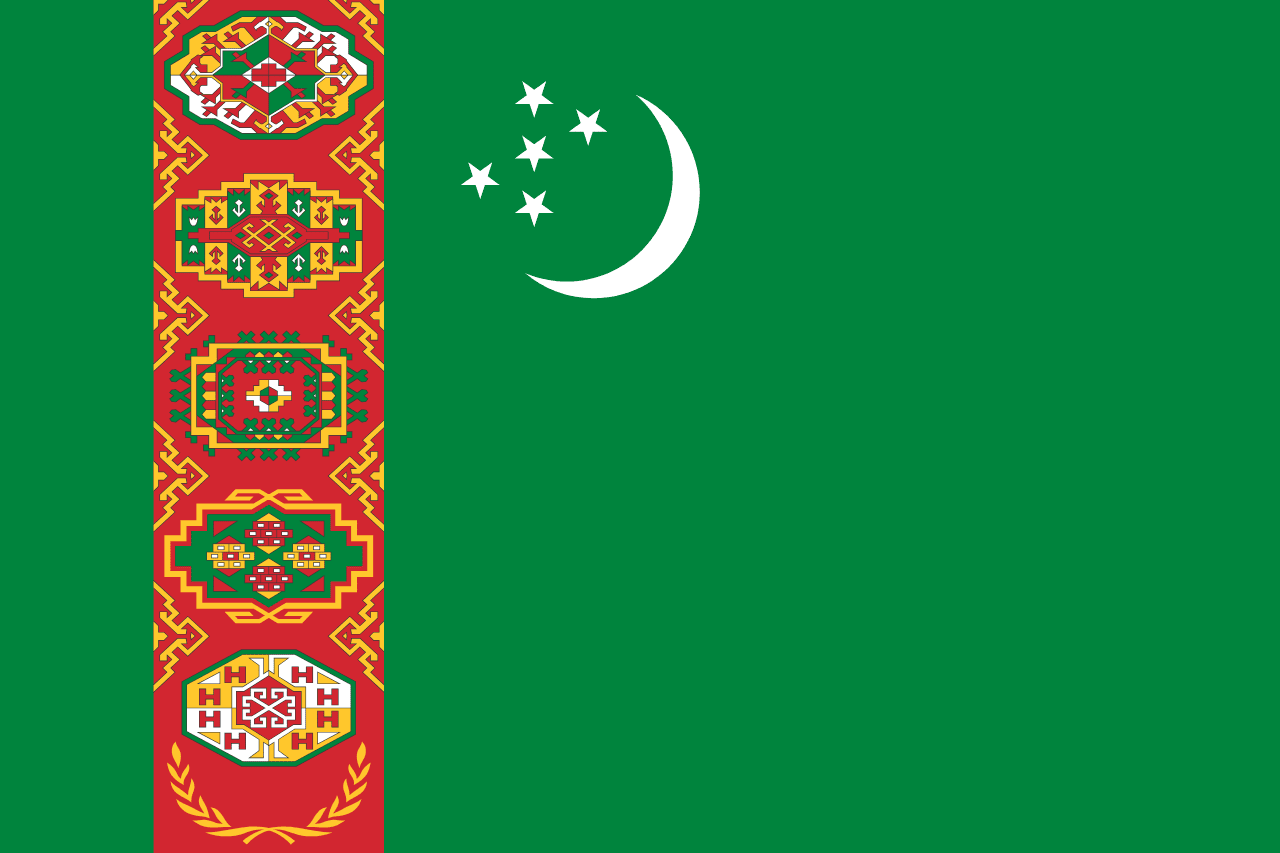
Turkmenistan
Asia
A green field with a vertical red stripe containing five traditional carpet guls (patterns) on the hoist side, and a white crescent moon with five stars in the upper left, representing Islam, the traditional carpet weaving culture, neutrality, and the five regions and senses of Turkmenistan.

Afghanistan
Asia
Few nations have worn their history so visibly upon their flags as Afghanistan. In just over a century, the country has cycled through more banners than any other modern state, each design mirroring the upheavals of power, ideology, and identity that have defined its story. The current flag, a stark white field bearing the Shahada in bold black script, was restored by the Taliban in 2021. To outsiders, its simplicity may appear severe, even austere. Yet within its minimal form lie deep layers of meaning: an assertion of faith, a claim to authority, and a conscious rejection of the ornate tricolors and emblems that preceded it. To understand this flag is to glimpse not only Afghanistan’s turbulent politics, but also the powerful role of religion, symbolism, and history in shaping its national identity.
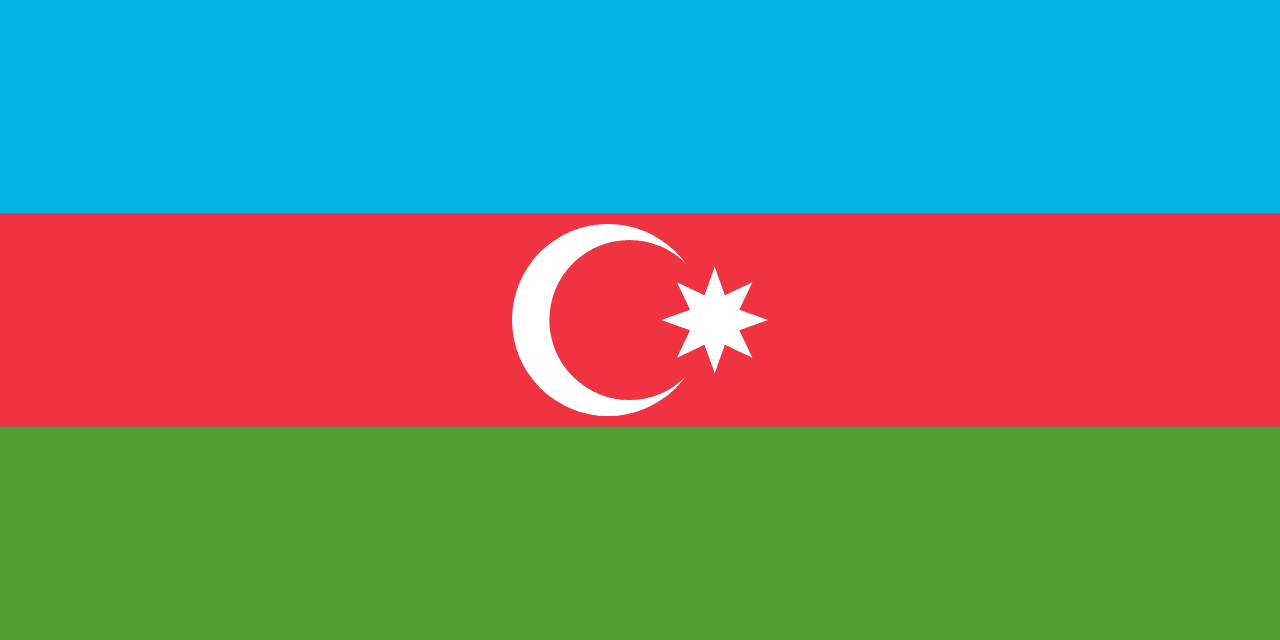
Azerbaijan
Asia
Three horizontal stripes of blue, red, and green with a white crescent and eight-pointed star in the center, representing Turkic heritage, modernity and progress, Islamic tradition, and the eight branches of the Turkic peoples, designed during the brief independence period of 1918-1920.